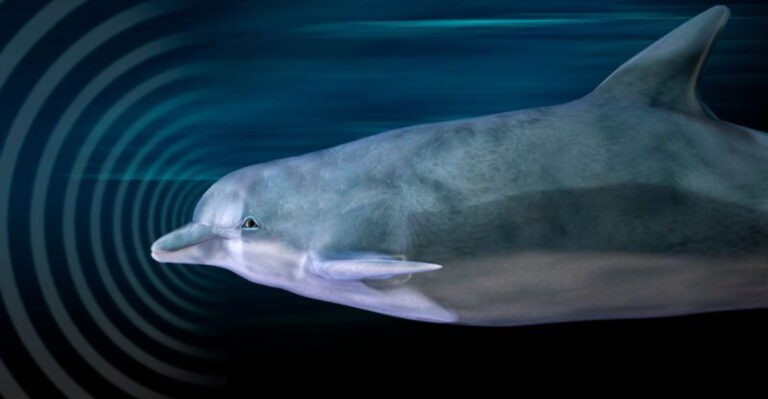Meet The Entelodonts, The Giant ‘Hell Pigs’ Of Prehistoric North America
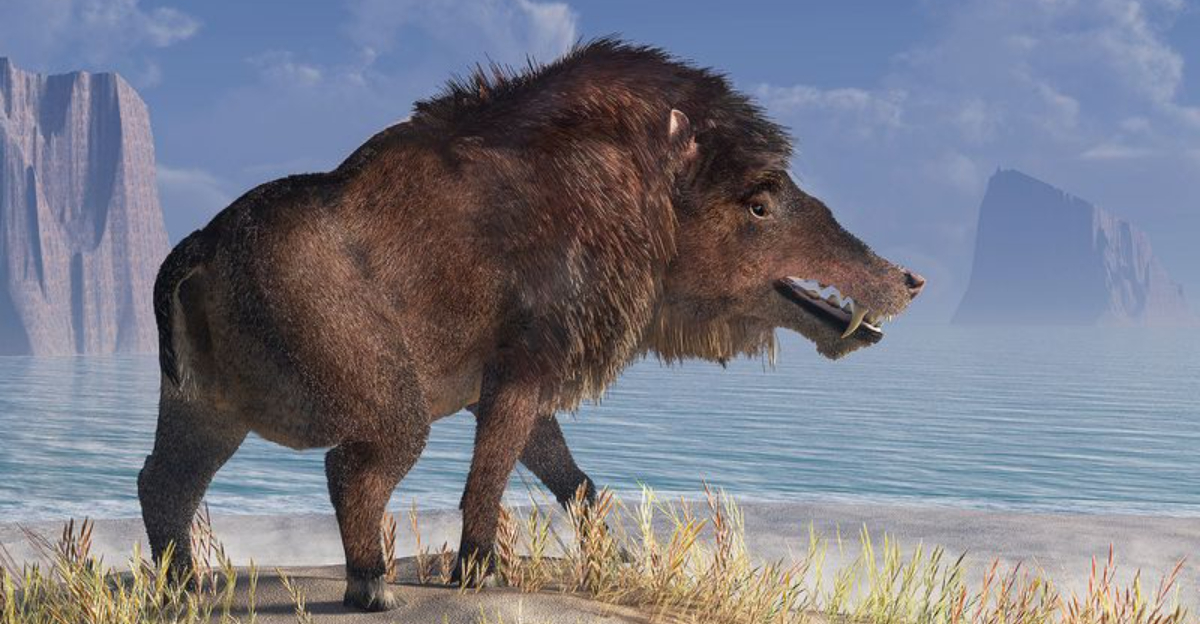
Long before humans walked the Earth, massive beasts called entelodonts thundered across North America.
These terrifying creatures earned the nickname ‘hell pigs’ due to their nightmarish appearance and aggressive nature.
Though they vanished millions of years ago, their fossilized remains tell an incredible story of one of the most fearsome mammals to ever roam our continent.
What Exactly Were Entelodonts?
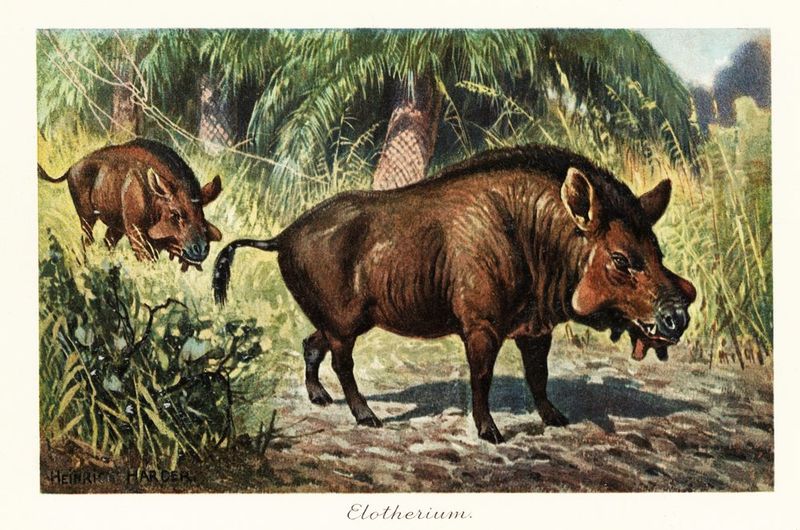
Entelodonts were massive omnivorous mammals that lived between 37 and 16 million years ago during the Eocene and Miocene epochs. Despite their pig-like appearance, they actually belong to an extinct family called Entelodontidae.
These creatures walked on two toes per foot and had distinctive bony knobs on their faces that likely supported powerful muscles. Some scientists believe they’re distant relatives of hippos and whales in the artiodactyl group.
Their fossils were first discovered in the 1840s in France, but have since been found across North America and Asia, revealing their widespread presence in prehistoric ecosystems.
Why Scientists Call Them ‘Hell Pigs’
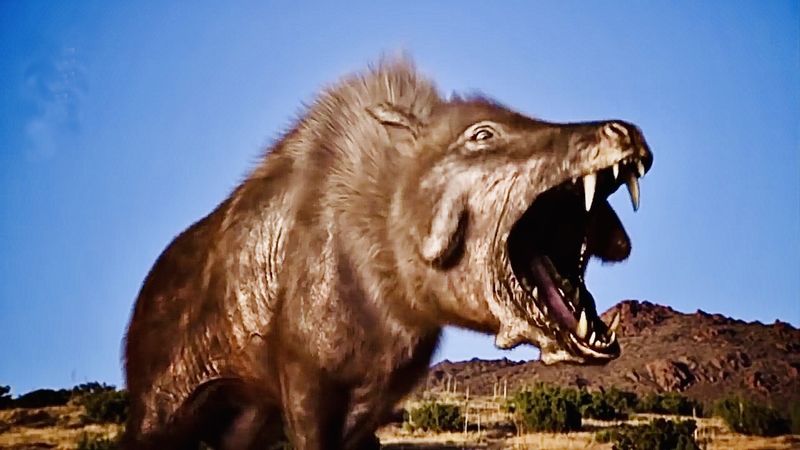
The nickname ‘hell pigs’ stems from their truly terrifying appearance. With massive skulls reaching up to three feet long, bulging eyes, and mouths filled with bone-crushing teeth, these creatures seemed like something from a nightmare.
Adding to their demonic look were the strange bony lumps and flanges protruding from their faces and jaws. These knobby structures gave them an otherworldly appearance unlike any modern animal.
Early paleontologists who unearthed their remains were struck by how these creatures combined familiar pig-like features with monstrous proportions and bizarre anatomical details, making ‘hell pigs’ an apt description that has endured for generations.
Not True Pigs – But Even More Terrifying
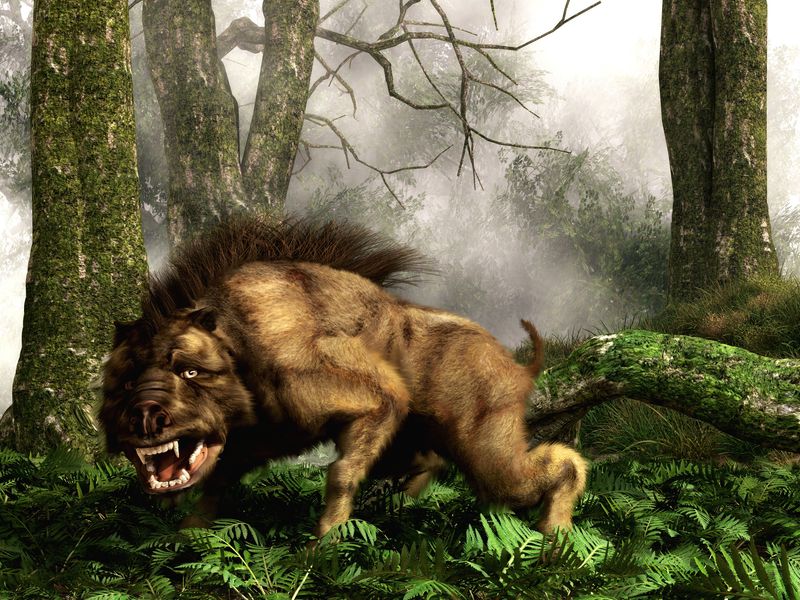
Contrary to their nickname, entelodonts weren’t actually pigs at all! Modern DNA analysis and fossil studies reveal they belonged to a completely separate evolutionary branch of even-toed mammals. Their closest living relatives today are hippos, whales, and dolphins – not pigs!
What makes this revelation even more chilling is that entelodonts evolved their pig-like features independently through convergent evolution. This means they developed similar traits to pigs despite having different ancestors.
Their intimidating appearance combined aspects of several modern animals: pig-like snouts, bear-like body proportions, and jaws powerful enough to crush bones like hyenas – creating a terrifying predator unlike anything alive today.
How Big Were These Prehistoric Beasts?
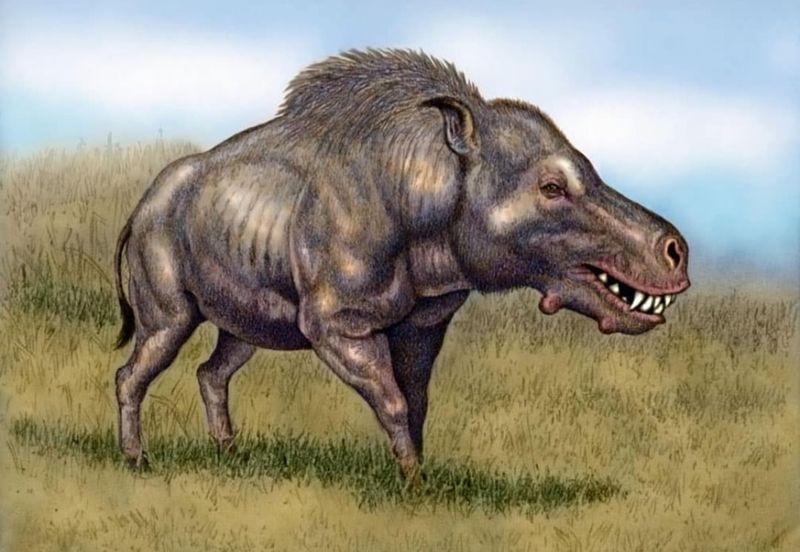
Entelodonts were absolute giants! The largest species, Daeodon, stood nearly 7 feet tall at the shoulder – about the height of a tall human – and could weigh up to 2,000 pounds. That’s heavier than a modern bison!
Their massive bodies stretched up to 10 feet long from snout to tail. Just their skulls alone could reach nearly 3 feet in length, with jaws capable of opening wide enough to engulf a modern human’s head.
Fossil footprints show their hooves left impressions over 4 inches wide. When they thundered across prehistoric plains in groups, the ground literally shook beneath them, warning other animals of their approach.
A Closer Look At Their Bone-Crushing Jaws
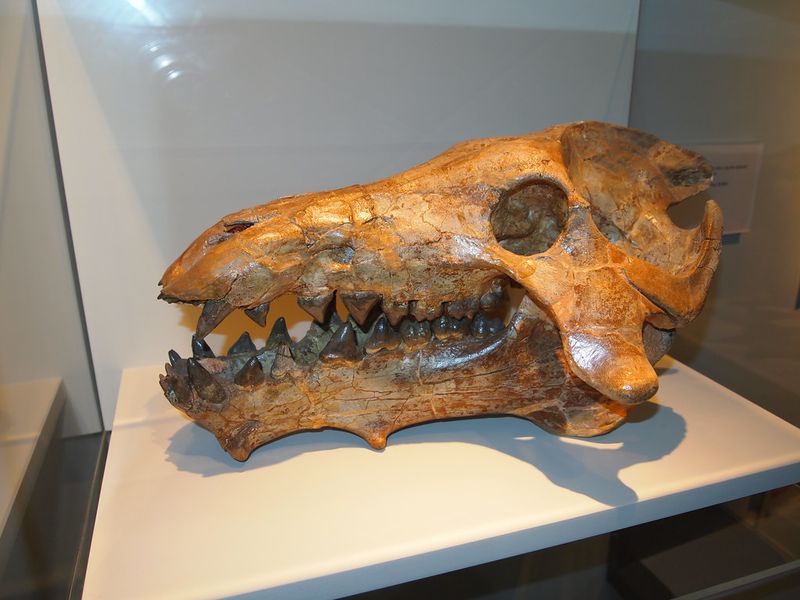
Entelodont jaws were evolutionary marvels of destruction. Their teeth formed a specialized toolkit: sharp incisors for gripping, dagger-like canines for piercing, and massive molars with thick enamel for pulverizing bones and tough plant matter.
Fossil evidence shows their jaw muscles attached to prominent bony flanges on their skulls, giving them bite forces estimated at over 1,000 pounds per square inch. For comparison, that’s about twice the bite force of a modern lion!
Microscopic wear patterns on their teeth reveal they regularly crushed bones to extract nutritious marrow. Paleontologists have even found fossilized prey bones bearing distinctive entelodont tooth marks – silent testimony to their fearsome feeding habits.
Where Entelodonts Once Roamed
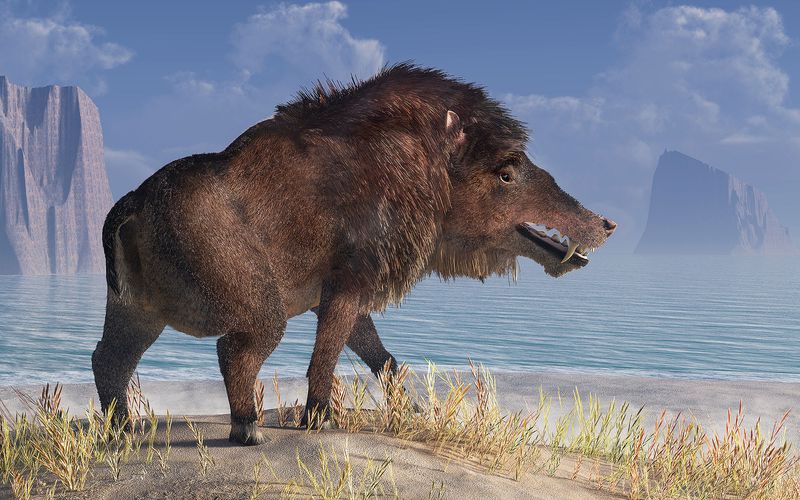
Entelodonts dominated the ancient landscapes of what would become North America for over 20 million years. Their fossils have been uncovered throughout the Great Plains, particularly in Nebraska, Wyoming, and South Dakota where ancient grasslands provided perfect hunting grounds.
These beasts weren’t limited to North America, though. Fossil evidence shows they also thrived across Asia, from Mongolia to Pakistan. Different species evolved to suit various environments, from woodlands to open savannas.
One famous fossil bed in the White River Badlands of South Dakota has yielded numerous complete entelodont skeletons. These well-preserved remains allow scientists to reconstruct not just their appearance but also how they moved through their prehistoric world.
What They Ate Might Surprise You
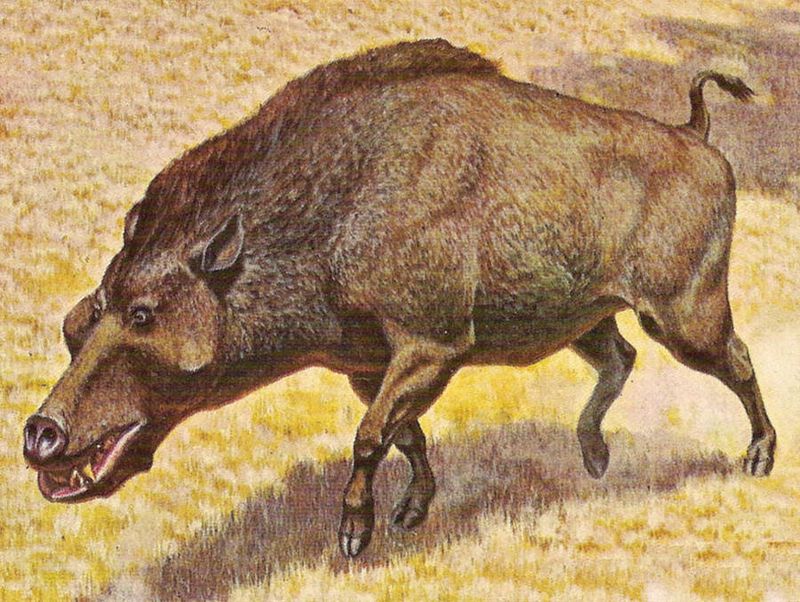
Forget the image of pigs rooting for truffles – entelodonts were apex predators with appetites to match their size! Analysis of their teeth shows they were true omnivores that leaned heavily toward meat-eating.
Stomach content fossils reveal they hunted other mammals, scavenged carcasses, and even cannibalized their own kind during tough times. Their powerful jaws made short work of bones, allowing them to access nutritious marrow other predators couldn’t reach.
Surprisingly, plant materials also featured in their diet. Microscopic scratches on their teeth indicate they consumed tough vegetation, fruits, and tubers when meat was scarce. This dietary flexibility likely contributed to their long evolutionary success across changing environments.
Fossil Clues Reveal Their Fierce Behavior
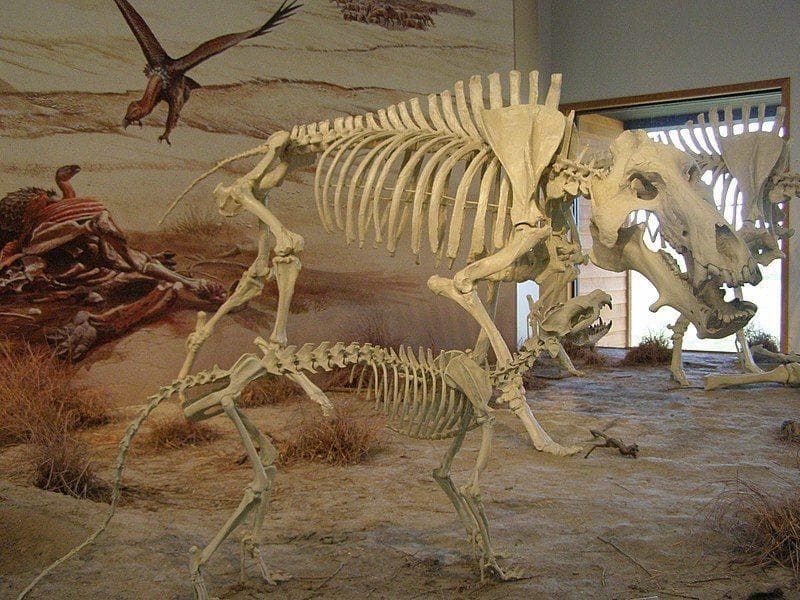
Fossilized skulls tell a brutal story about entelodont social lives. Many specimens bear healed fractures and deep scars, suggesting these creatures frequently fought each other, likely for territory or mating rights.
The distinctive bony knobs on their faces weren’t just for show. Scientists believe these protrusions protected vital blood vessels during violent head-butting contests, similar to how modern warthogs fight.
Trackway fossils discovered in Nebraska show multiple entelodont footprints moving together, indicating they might have hunted in small family groups. This social hunting strategy would have allowed them to take down larger prey, making them even more formidable predators in their prehistoric ecosystem.
Why They Eventually Vanished From Earth
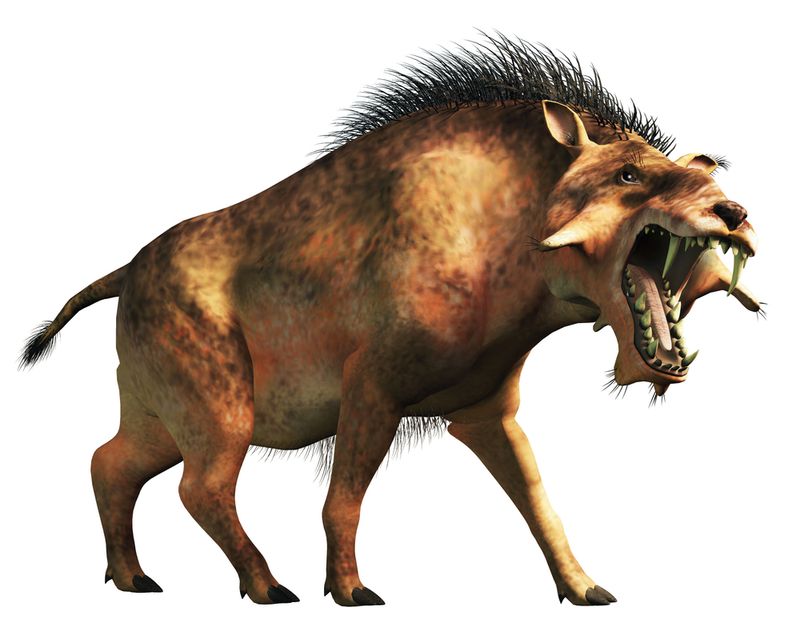
After ruling for over 20 million years, entelodonts mysteriously disappeared around 16 million years ago. Climate change played a major role in their extinction as global cooling transformed their woodland habitats into open grasslands.
These habitat changes favored faster, more efficient predators like early dogs and cats. Despite their fearsome jaws, entelodonts’ bulky bodies and short legs made them too slow to compete with these new hunters.
Competition from other omnivores like early bears and peccaries further squeezed their ecological niche. The very specializations that made entelodonts successful for millions of years ultimately became evolutionary dead ends when their environment changed too rapidly for them to adapt.
How Entelodonts Compare To Modern Animals
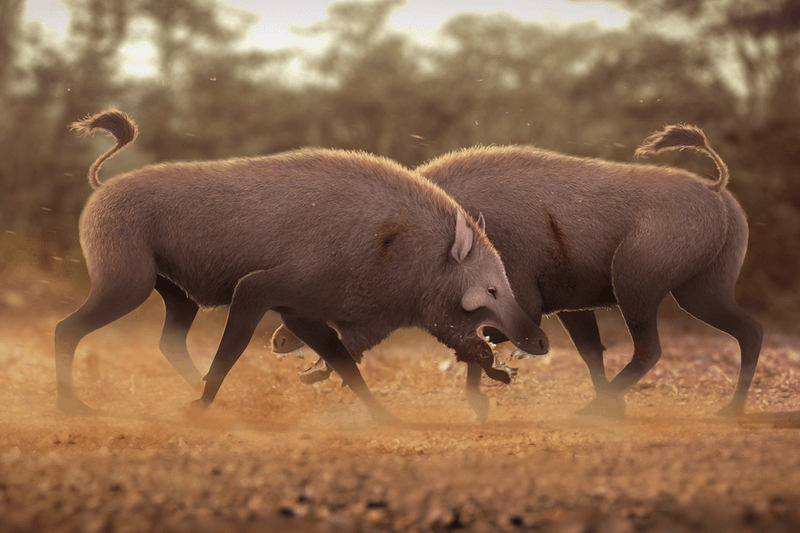
No single modern animal perfectly matches the entelodont’s bizarre combination of features. Their closest living relatives—hippos and whales—evolved in completely different directions, adapting to aquatic environments rather than remaining terrestrial predators.
Their ecological role most closely resembles today’s grizzly bears: large omnivores capable of both hunting live prey and processing tough plant materials. However, entelodonts had more specialized bone-crushing abilities similar to modern hyenas.
If entelodonts had survived to modern times, they would dwarf our largest land predators. A full-grown Daeodon would outweigh the largest Kodiak bear by nearly 500 pounds while standing taller at the shoulder than a Clydesdale horse!



